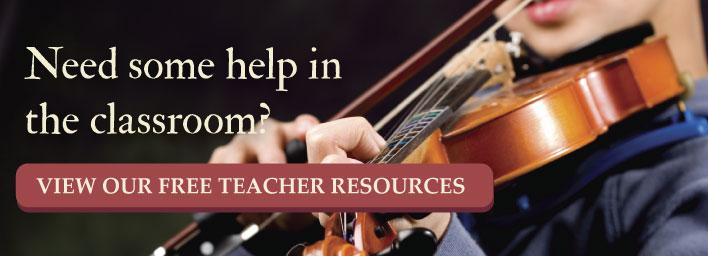
 Teaching the elements of music has its highs and lows, but it’s usually an enjoyable experience. You get to impart knowledge while sharing your love of music; plus, you never know what your lessons might inspire in your students. Yet, in addition to being a super fun subject to explore, often students are ready to make noise when it’s time for music class.
Teaching the elements of music has its highs and lows, but it’s usually an enjoyable experience. You get to impart knowledge while sharing your love of music; plus, you never know what your lessons might inspire in your students. Yet, in addition to being a super fun subject to explore, often students are ready to make noise when it’s time for music class.
That natural energy is perfect for using to teach the music element, dynamics. “Dynamic” is the term used to describe the loudness of the music, but more specifically, how loudly to play certain parts contained in a piece.
Basic Concept and Definition
All sounds have levels that can range between barely audible or barely endurable. While scientists and most of the world refer to this measurement as amplitude, musicians call it dynamics. The amplitude of a sound is registered in decibels, but in music, rather than using numbers, the interpretation of musical dynamics and accents are dependent on a number of factors, including:
- How the markings compare with other dynamics in the piece
- The normal dynamic range of the instruments
- Performer ability
- The musical genre
- The acoustics of the place where the music is being played
For example, one violin playing loud will not be as loud as 15 violins playing loud together, and playing in the open air will not sound as loud as when you play in a studio. All of these factors contribute to the sound levels created. The manner in which they are used help contribute to the overall feeling produced by the music.
Composers use accent marks and Italian terms to indicate the dynamics of a piece of music. When the dynamics need to gradually change, crescendo and diminuendo markings (that look like stretched greater than/less than arrows) are used between dynamic markings situated above or below the staff.
Activities
Students can easily comprehend dynamics and accent marks when you combine listening activities with sheet music examples. These activities provide the elemental introduction to the concepts and how they are applied.
Recognizing and Exploring Dynamics
Materials: Choose one of two songs that the students are already familiar with, and download or create a list of terms that you’ll be discussing and demonstrating.
Procedure:
Dynamic graduations are based on two terms: piano and forte. Explain to your students that when these adjectives are used in the comparative and superlative forms in Italian, the meaning changes. It may help students understand the concept if you make the correlation to English. Just like we use different forms of adjectives and adverbs to describe something in detail, musical dynamics do the same thing in Italian. Introduce the terms you’ll be covering such as:
- Mezzo (m)—pronounced “MET-soh,” means medium and is often used with other dynamic marks
- Forte (f)—pronounced “FOR-tay” means loud
- Fortissimo (ff)—pronounced “FOR-tiss-im-oh” means very loud
- Piano (p)—means soft
- Pianissimo (pp)—indicates very soft
Students can add the word “very” for every extra letter used.
Practice singing or playing the song you’ve chosen by first asking the students to perform it mezzo piano (mp). Next, perform it again even softer (piano), and so on until the music can barely be heard. Practice the same song again, only this time reverse the graduations. If you are singing the song, make sure that the students don’t digress into a shouting match, the idea is to hear the various distinctions.
Next, you can choose a student to be the “conductor.” Demonstrate some typical hand motions used; for instance, hand held palm open moving up means increase loudness, and stress that there’s no need to conduct the rhythm, just the dynamics. Encourage students to experiment making different parts of the piece louder and softer.
Recognizing Accents
Talk about how composers use accents for different types of instruments and musical styles to emphasize which notes should be player stronger (more forceful) than others to create distinctions.
Materials: You’ll need some sheet music and recordings that feature accent marks above notes on the staff, or you can draw some measures on the board—like a series of quarter notes with various accents on different notes.
Procedures: Explain that annotated notes (those with symbols or above the staff, above the notes) are typically played louder than the ones next to them, but the exact performance depends on the instrument and the style of the music being played. You may also want to introduce tenuto (dash) and marcato (open wedge that looks like a tent) marks in addition to accents.
Establish a rhythm that has a slow tempo, and have the students clap the example first before playing it. Emphasize how each instrument should play the accented note, and repeat the exercise until all of the students recognize and understand how accents are played. Doing so will enrich their enjoyment of music and improve performances.

